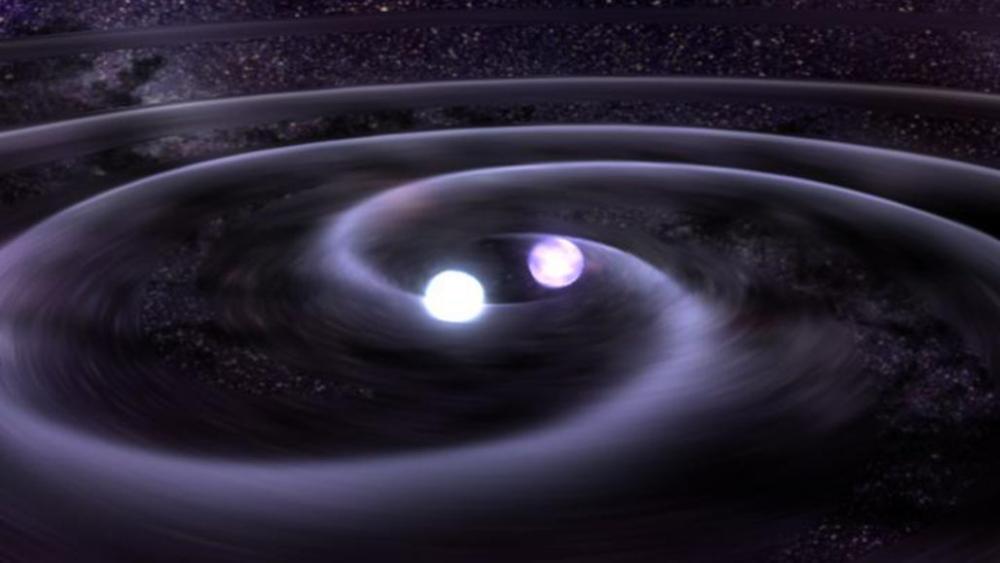
Two more neutron stars (illustrated) have been caught in the act of merging
GODDARD SPACE FLIGHT CENTER/NASA
During the last decade this field has metamorphosed. Cosmological parameters have been measured with few per-mil precision, thanks to the clean sky-mapping of CMB by Planck, and Baryonic oscillations by BOSS. The next generation cosmology projects will exploit weak lensing (Euclid, LSST), and the quest for CMB polarization B-modes will go on both from ground and space.
Gravitational waves observed by LIGO and VIRGO opened a brilliant portal to the observation of violent phenomena such as black hole fusion, neutron star collision, nucleosynthesis of heavy baryons in kilonovae. Our laboratories will continue to take part in this field through participation into large projects such as LISA. The LabEx is a natural place to help coordinate observations of all products expected to be connected with Gravitational Wave emission, high and low energy photons, neutrinos, charged cosmic rays.
In particular, gamma- and cosmic-ray detection, in which some of our laboratories played a pioneering role, are crucial counterparts in multi-messenger observations. The CTA ground array has received explicit supports from our LabEx (through the Canevas Emblematic project). P2IO is also involved into Space projects for the next years (Fermi extended operations, SVOM,...).
